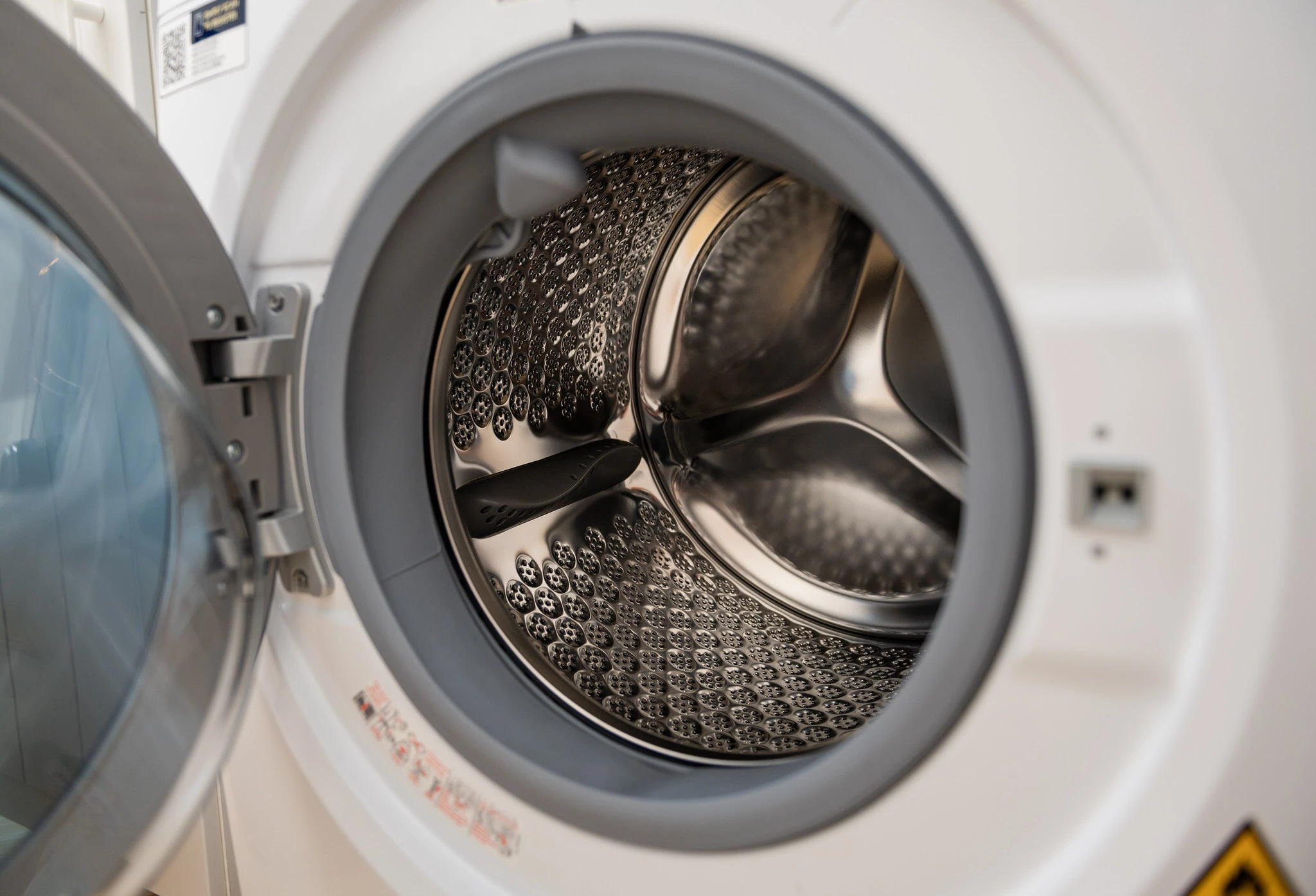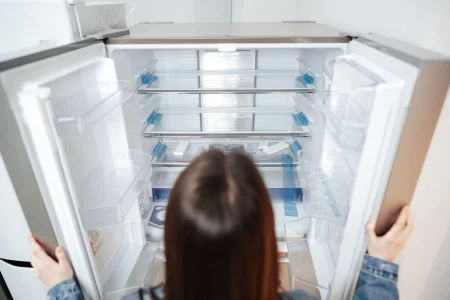A washing machine is one of the heaviest and most awkward household appliances to move. It contains water, internal drums, and suspension systems that can easily be damaged if mishandled.
Whether you’re relocating across London or just to another room, knowing how to move a washing machine safely will help you protect both the appliance and your property.
Understanding why washing machines require extra care
A washing machine isn’t just a metal box with hoses — it’s a precision-balanced appliance with shock absorbers, counterweights, and electronic parts. Inside, the drum is suspended to absorb spin vibrations.
If the machine is moved without proper stabilisation, the drum can swing freely, potentially causing internal damage.
Washing machines also retain residual water even after a cycle, so failing to drain and dry them can lead to leaks during transport. Understanding these risks ensures you take the correct precautions before moving day.

Key things to prepare before moving day
Before moving your washing machine, prepare the area and gather the necessary tools.
Disconnect safely
Unplug the washing machine from the power socket first. Turn off both the hot and cold water supply valves, then disconnect the hoses from the back. Keep a bucket or towel ready — some water may spill out.
Drain any remaining water.
Pull out the drain hose and empty the remaining water into a shallow tray. Many modern washing machines have a small filter door at the front; open it and let any trapped water run out entirely.
Secure the drum with transit bolts.
When the machine was first delivered, it came with long transit bolts that locked the drum in place. Reinsert these bolts before moving. If you no longer have them, contact the manufacturer or use firm padding inside to restrict drum movement.
Clean and dry the machine
Wipe the inside and outside with a soft cloth and leave the door open to air dry. This prevents mould and musty smells when you reconnect it later.
Prepare access and materials.
Measure your doorways and hallways to ensure the machine fits through. You’ll need a trolley or appliance dolly, straps, and moving blankets to protect the casing from scratches.
Step-by-step guide to moving a washing machine
Step 1 – Disconnect completely
Ensure the machine is switched off and disconnected from water, power, and waste pipes. Coil the cables and hoses neatly, securing them to the back of the machine with tape or straps.
Step 2 – Protect the drum
Insert transit bolts or stabilising rods. This is essential — without them, the drum can bounce and damage suspension springs.
Step 3 – Wrap for protection
Cover the entire machine with a thick blanket or stretch wrap. Add corner protectors to prevent wall and floor damage when navigating tight spaces.
Step 4 – Use a dolly or trolley
Tilt the washing machine slightly backward and slide a dolly underneath. Strap it tightly to keep it stable. Avoid dragging it across the floor, especially on tiles or laminate, which can scratch easily.
Step 5 – Move carefully through doorways
Have one person guiding the front and another steadying from behind. Keep it upright and move slowly, especially when going down stairs or across thresholds.
Step 6 – Load into the van upright
Always keep the washing machine vertical. Load it against a wall in the removal van and secure it with ratchet straps. Never place heavy items on top.
Step 7 – Wait before reconnecting
Once delivered, remove the transit bolts, reconnect hoses and cables, and allow the machine to stand for at least 30 minutes before use. This helps the internal fluids settle.

Common mistakes to avoid
Even minor oversights can cause leaks or mechanical faults. Avoid these common mistakes:
- Forgetting to refit transit bolts before moving.
- Leaving water in hoses or the filter.
- Lying the machine flat during transport.
- Use adhesive tape on the front panel or door.
- Reconnecting too soon after delivery.
- Moving the appliance without help or equipment.
Taking a few extra minutes to prepare properly can save hundreds of pounds in repairs.
Benefits of hiring professionals
Professional movers handle heavy household appliances every day. They have the tools and experience to lift, secure, and transport washing machines safely, even through tight staircases or basement flats.
For London properties, professionals can also manage access issues, parking permits, and time-restricted loading bays — saving you time and stress.
By using an expert removals team, you reduce the risk of leaks, electrical damage, and personal injury.
The London angle: parking and access considerations
In London, even a short move can require logistical planning. Many boroughs have restricted parking bays and loading zones that require temporary permissions.
If a removal van needs to stop outside your home, check with your council for a parking suspension or dispensation in advance.
You can find all borough links and details in our Parking Suspension and Dispensation Guide
This small step avoids fines and ensures your movers can park close to your property for safe appliance handling.
Pre-move checklist
Before moving your washing machine, make sure you:
- Turn off the power and water supply.
- Drain all remaining water from the machine.
- Reinsert transit bolts to secure the drum.
- Coil and tape cables and hoses to the back.
- Wrap the appliance with a moving blanket and straps.
- Keep it upright at all times during transport.
- Wait before reconnecting at your new home.
Conclusion
Moving a washing machine safely is all about preparation and balance. By fully draining it, securing the drum, and keeping it upright, you can protect the appliance from costly damage.
If you’re moving in or around London, Best London Removals Ltd offers professional help with disconnecting, transporting, and reinstalling your washing machine or other household appliances.
Request a free, no-obligation quote today and let our experienced team handle the heavy work.
FAQs how to move Washing Machine
Find quick answers to common questions about how to safely move a washing machine
Can I move a washing machine without transit bolts?
It’s risky. The drum can move freely, potentially causing internal damage. If you no longer have the bolts, contact the manufacturer or use padding to temporarily stabilise the drum.
How do I drain all the water before moving?
Detach the drain hose and let the water flow into a shallow tray. Check the filter on the front panel and manually empty any trapped water.
Can I transport a washing machine on its side?
Try not to. Always move it upright to prevent drum misalignment and gearbox oil leaks. If necessary, place it on the side opposite the controls and let it rest upright for a few hours before use.
How long should I wait before using it again?
Wait at least 30 minutes to one hour after reconnecting it and removing the transit bolts. This gives internal fluids time to stabilise.
Do movers reconnect washing machines?
Many professional removal companies, including Best London Removals Ltd, can disconnect and reconnect your washing machine safely as part of the moving service.



